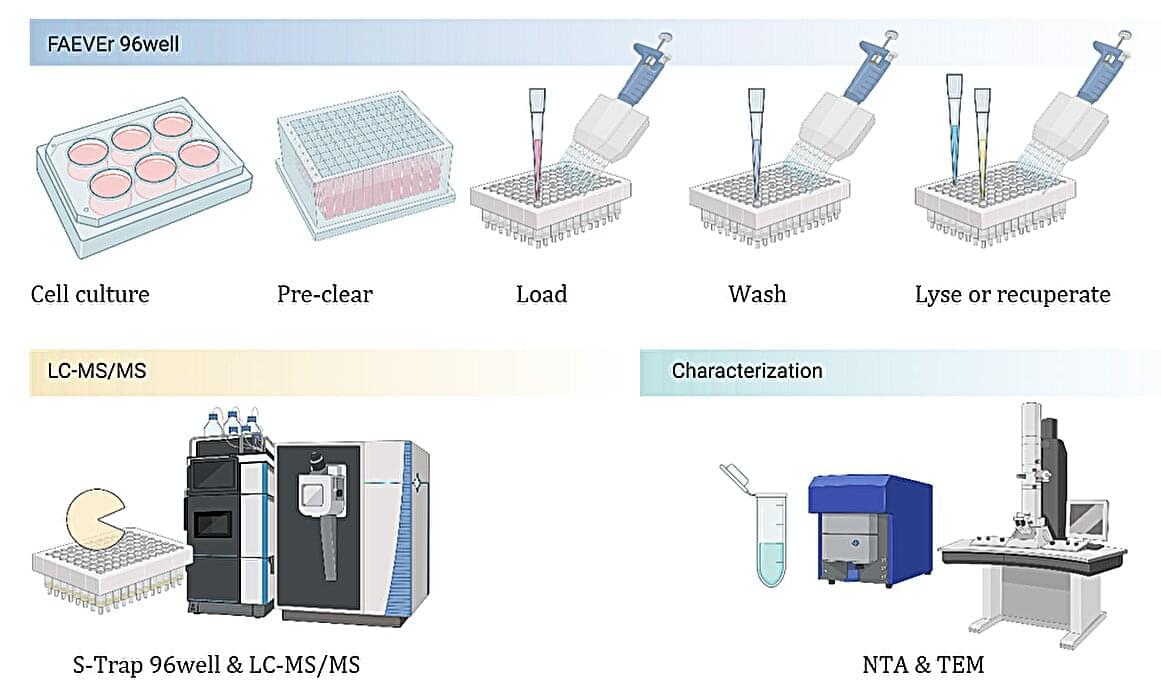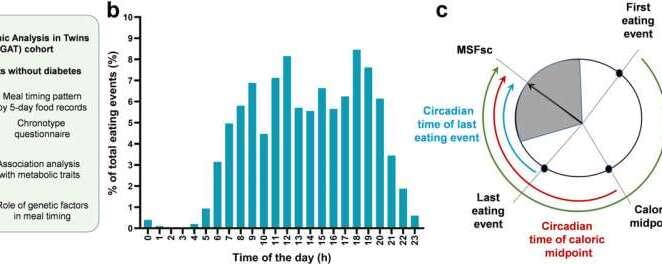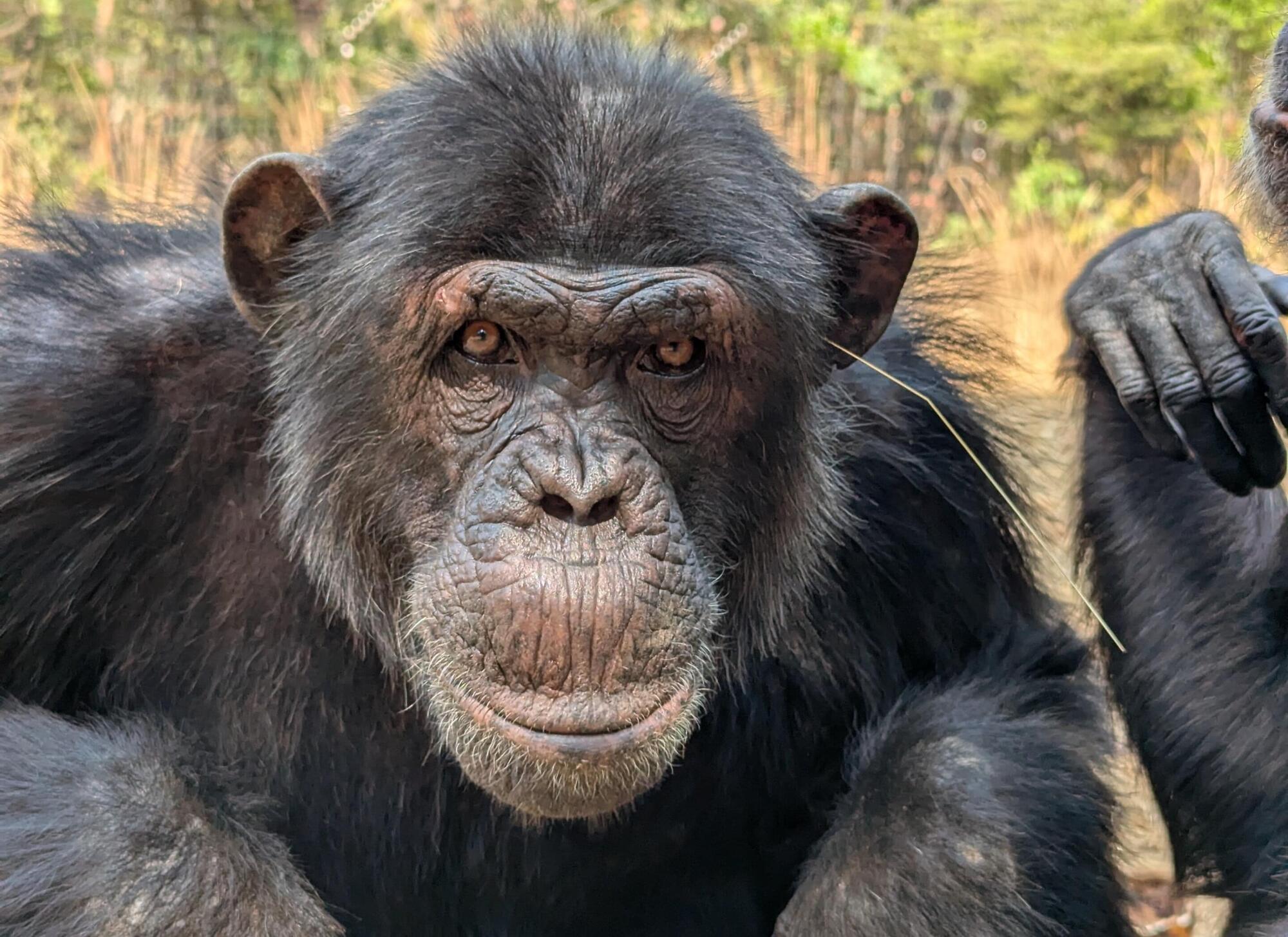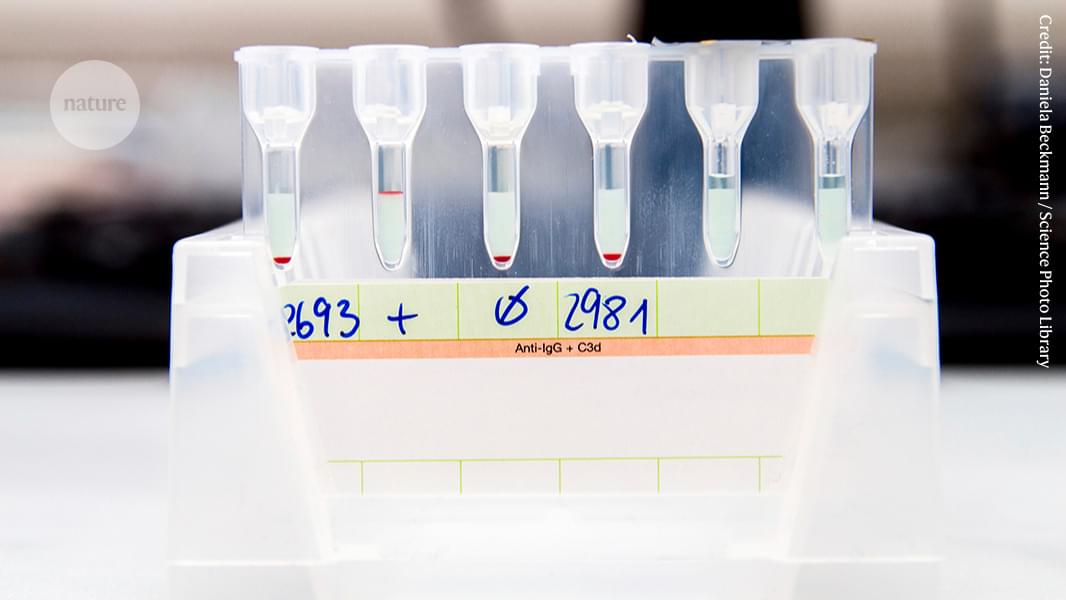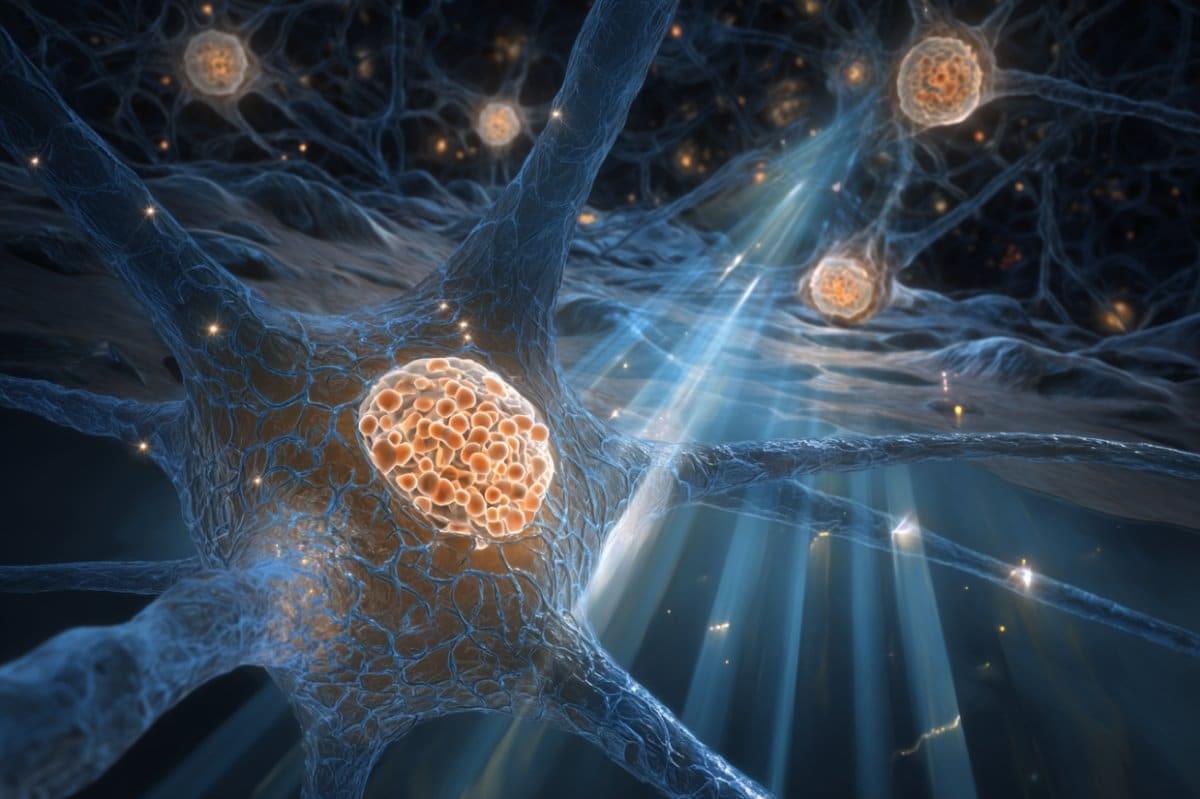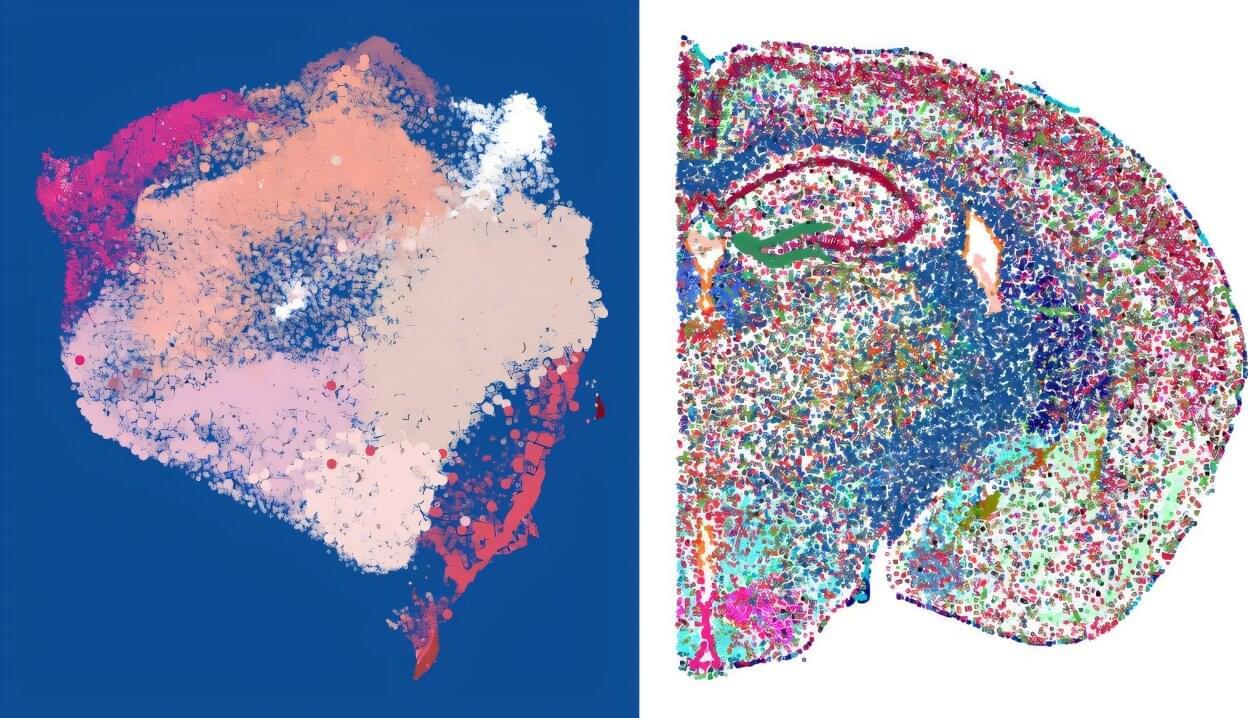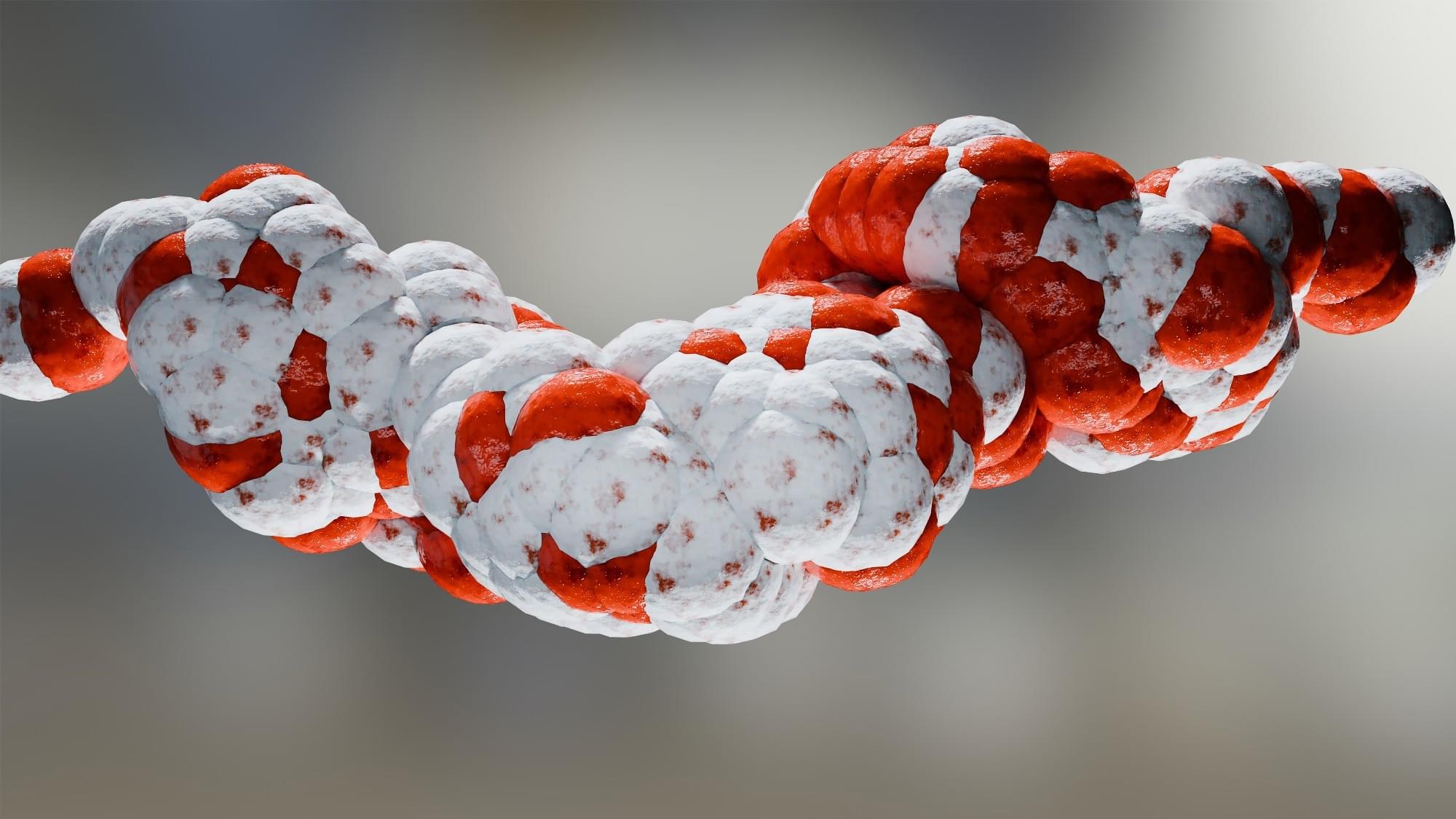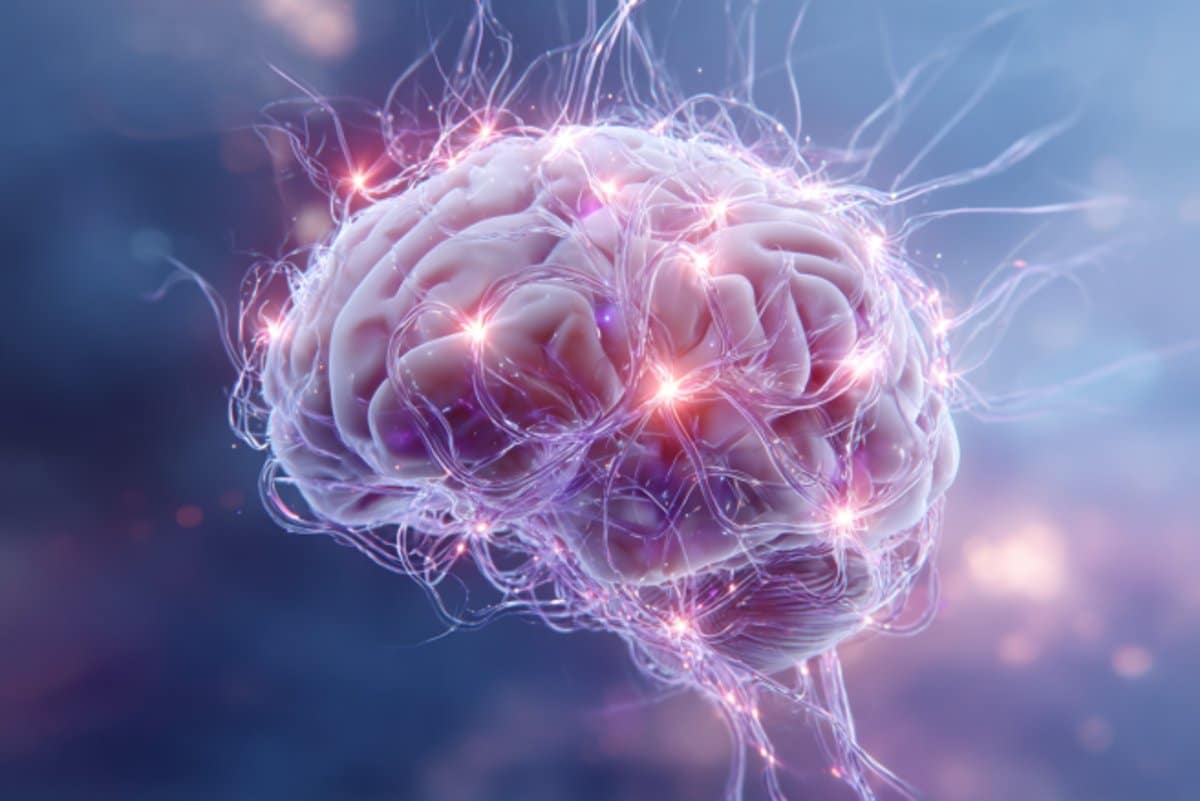A group of researchers at the VIB‑UGent Center for Medical Biotechnology has developed a new platform to isolate and analyze extracellular vesicles (EVs), nanosized particles secreted by cells and playing a role in cellular communication and disease development. Called FAEVEr, the method increases the throughput of EV enrichment and is significantly more cost‑efficient than existing methods. The study is published in the Journal of Extracellular Vesicles.
Extracellular vesicles (EVs) are small particles that carry proteins, RNA, and other biomolecules from their cell of origin. They hold much promise for diagnostics and therapeutics, but isolating them from complex biofluids at high purity and throughput remains a major challenge. EVs are incredibly small—between 30 and 150 nanometers in size.
To capture these tiny containers of messengers, scientists need to rely on sophisticated equipment such as ultracentrifuges. Unfortunately, these traditional methods of EV enrichment are time‑consuming and resource‑intensive with relatively low throughput.
